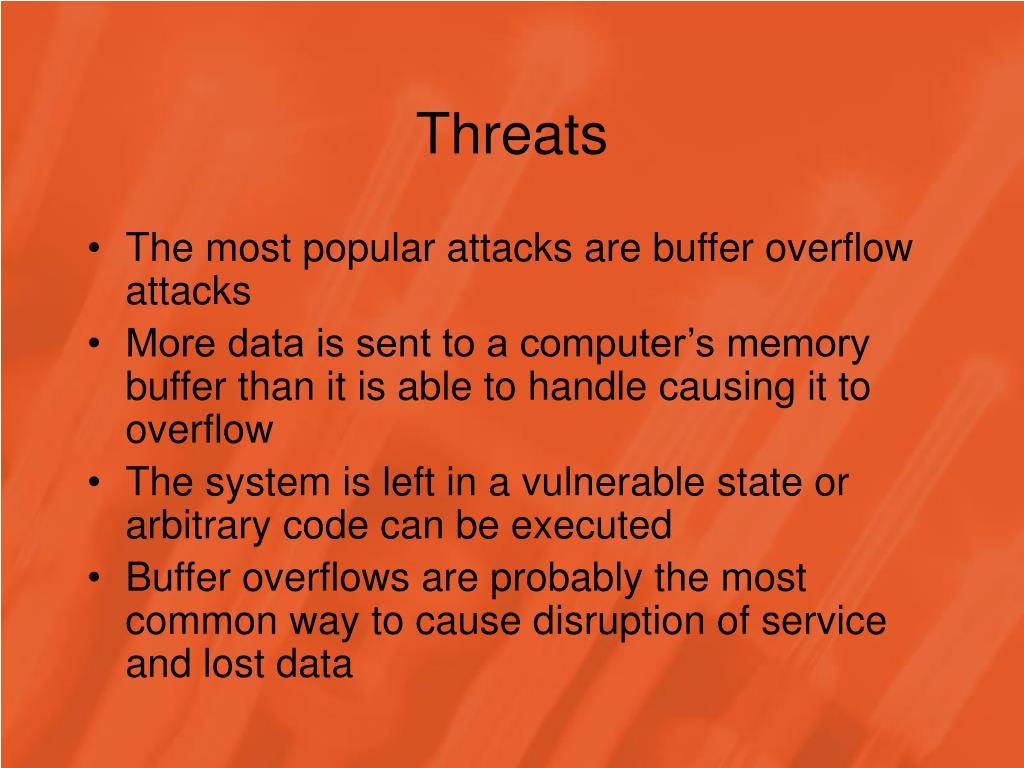

- #BUFFER OVERFLOW ATTACK IN NETWORK SECURITY SOFTWARE#
- #BUFFER OVERFLOW ATTACK IN NETWORK SECURITY CODE#
#BUFFER OVERFLOW ATTACK IN NETWORK SECURITY CODE#
In the second category are intrusions that do not involve remote code execution a server application may be manipulated to give up data in ways that its designers did not foresee.įor example, in 2008 David Kernell gained access to the Yahoo email account of then-vice-presidential candidate Sarah Palin, by guessing or looking up the answers to the forgotten-password security questions for the account.
#BUFFER OVERFLOW ATTACK IN NETWORK SECURITY SOFTWARE#
More technical forms of attack may involve a virus, a buffer overflow ( 28.2 Stack Buffer Overflow and 28.3 Heap Buffer Overflow), a protocol flaw ( 28.1.2 Christmas Day Attack), or some other software flaw ( 28.1.1 The Morris Worm). Perhaps the simplest form of such an attack is through stolen or guessed passwords to a system that offers remote login to command-shell accounts. We discuss these attacks below in 28.1 Code-Execution Intrusion. A computer taken over this way is sometimes said to have been “owned”. The first category is arguably the most serious this usually amounts to a complete takeover, though occasionally the attacker’s code is limited by operating-system privileges. Eavesdropping on or interfering with computer-to-computer communications.Attacks that extract data from the target, without code injection.Attacks that execute the intruder’s code on the target computer.This chapter focuses on general principles and on secret-key approaches to authentication and encryption the next chapter addresses public-key encryption.įor our limited overview here, we will divide attacks into three categories: In this chapter and the next we take a look at just a few of the issues involved in building secure networks. How do we keep intruders out of our computers? How do we keep them from impersonating us, or from listening in to our conversations or downloading our data? Computer security problems are in the news on almost a daily basis. 28.8.2 Simultaneous Authentication of Equals.28.7.5 Block-cipher-based stream ciphers.28.6.1 Secure Hashes and Authentication.

28.2.3.3 Making the stack non-executable.28.2.3 Defenses Against Buffer Overflows.28.2.2 An Actual Stack-Overflow Example.


 0 kommentar(er)
0 kommentar(er)
